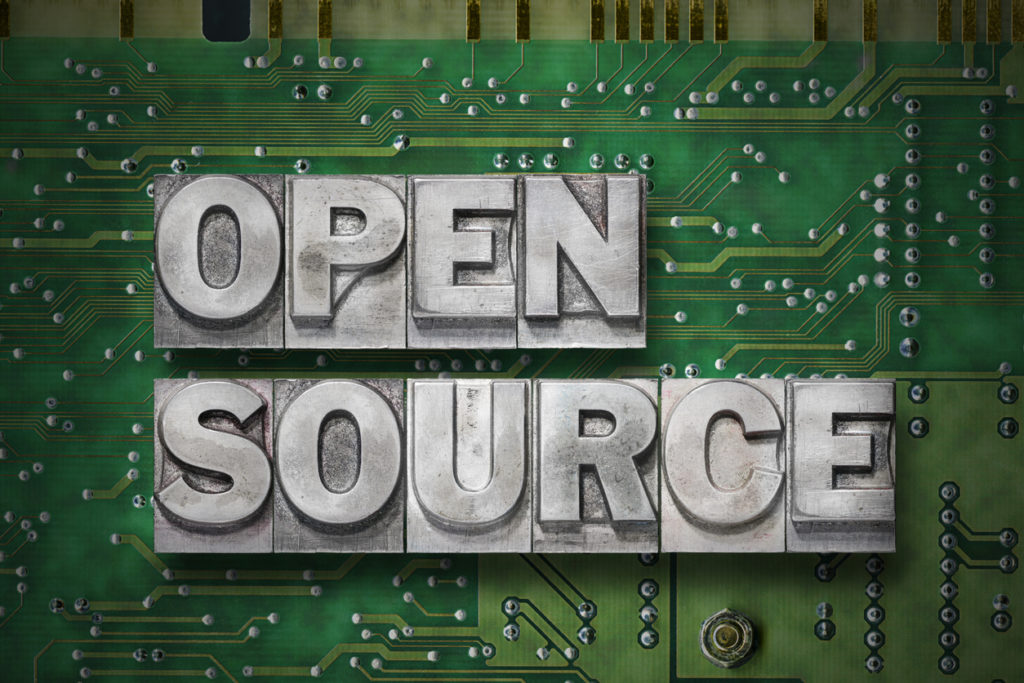Infrastructure is vital for scientists, publishers, libraries, and everyone involved in scholarly research and communication and its assessment and showcasing. For several years, I have been tracking some of the major efforts to build and control portfolios, if not platforms, of scholarly research and communication infrastructure and services — and the implications for the academy. It is a major story of mergers and acquisitions by (and organic growth within) the likes of Elsevier, Clarivate’s Web of Science group, and Holtzbrinck’s Digital Science. At the same time, there is also a wave of effort to build various types of open source infrastructure in support of scholarly publishing (such as CoKo), open science (such as the Center for Open Science), and library-based scholarly communication (such as DuraSpace). Several of the foremost enterprises in this open source arena recently joined forces with a group of universities that direct funding to open source projects to call for greater resources to be invested in support. This Invest in Open Infrastructure (IOI) initiative, though nascent, may be the best hope to date of some kind of common collective action. To learn more about this initiative and some of its future plans, I interviewed Dan Whaley, the CEO of open source annotation initiative Hypothes.is, who is one of IOI’s leaders. The answers below are his, with some edits to language contributed by Kristen Ratan, Mike Roy and David Lewis.

Let’s start broadly, discussing open source, which can reduce costs, enable collaboration, or drive competition. Why do you see “open” as so vital in our community even as so much innovation is taking place among start-ups and even mature businesses in the scholarly communication and research workflow and management sectors?
While we all happily use closed and proprietary software in our daily lives, the scholarly world is different. We collectively invest in scholarship with the goal of advancing our understanding of humanity and the universe. It’s fundamentally collaborative. We *need* to do things like exchange data, integrate systems, harmonize APIs, and compute against citation graphs in order to more effectively accomplish those goals. The more friction there is in that process the more we are missing opportunities to discover. A team working in one area misses the crucial insight of a researcher in another. Closed scholarly systems that artificially restrict collaboration and the sharing of knowledge are a tax on human potential usually for the sake of profit. I think it’s also important to note that they are unnecessary — a failure of imagination if you will — even among commercial for-profit businesses.
As just one example, a few larger publishers have still refused to open their bibliographic citations under the I4OC initiative, even while most other major publishers have opened theirs. Closed citations are clearly not fundamental to running a successful publishing business.
There’s a massive shift in business models underway. The more we show that it’s possible to do things differently, the more we’ll encourage and accelerate that shift.
Open infrastructure is the solution to all this. For me, open infrastructure is simply shorthand for technology in which the incentives to collaborate and work together are built in by design. That includes elements like open source software, open APIs, open data and open standards, but more fundamentally it’s a mindset in which your reward — either personal or organizational — comes from working together as a community for the benefit of all.
As someone who is product focused, a question I always try to ask is what is the best user experience, regardless of who owns which piece? Does what we’re implementing actually make it easier for people to accomplish their goals? Closed systems often make decisions simply for the sake of preventing or restricting access that create terrible experiences and result in lower utility. Open systems do this too sometimes, but at least the inherent motivations are more likely to be aligned.

What is the unmet need you see the Invest in Open Infrastructure initiative addressing?
IOI grew out of the frustration of many of us that are trying to start and grow open technology projects in the scholarly area. It’s extremely difficult to fund these projects as non-profits. Most of us compete for resources from a shrinking pool of private foundations like Sloan, Mellon, and Schmidt who are willing to support technology infrastructure. At Hypothesis, the already small number of foundations willing and able to support us has dropped by half in five years — all while our need for growth capital is expanding not diminishing. Helmsley, Arnold, and Omidyar have effectively shuttered their technology programs, others are under pressure.
Similarly from the perspective of institutions that are consumers of technology infrastructure (e.g., those behind the Open Platforms Group), their closed infrastructure is increasingly under threat of acquisition and consolidation, resulting in shifting priorities and business models. They’re also feeling the pain of the lack of coherence and integration between the open systems they rely on. They are acutely aware that open works better for them, but there is no scalable collective action or funding model in place for them to rely on.
Our fundamental thesis is that by joining the interests of foundations and government funders with those of the institutions who adopt open infrastructure, we can increase the amount of funding available for open infrastructure substantially. This effort can support both the large, well-known open infrastructure projects and also the smaller ones that provide valuable services but can’t easily attract the attention of funders. We believe that the resources available globally within governments, agencies, institutions and foundations are far in excess of what’s necessary to accomplish this — they just need to be coordinated.
When David Lewis presented on the 2.5% Commitment at last year’s JROST meeting, I think it opened our eyes that voices within institutions were seeing the same thing, and that there might be a solution waiting to be pursued.
As Cameron Neylon wrote in his provocatively titled “Against the 2.5% commitment”: “Any proposal that starts ‘we’ll just get all the universities to do X’ is basically doomed to failure from the start. Unless coordination mechanisms are built into the proposal. “ (his emphasis). IOI is the mechanism we propose (and I’m grateful that both Cameron and David have joined the effort to architect this). Fundamentally what we envision is a way to bring together producers and beneficiaries of open infrastructure.
A particularly important outcome of this would be to encourage more entrepreneurs to start open projects versus closed ones, if they can see that resources are there to support them. We’ll never know how much more of our environment can be open by default until we provide the funding infrastructure to support and nurture that pattern.
IOI emerges in the context of many other recent initiatives to deepen collaboration across open initiatives, for example, the efforts to advocate for all libraries to devote 2.5% of their budgets to open, your own leadership on the Joint Roadmap for Open Science Tools (JROST), and the “Mapping the Scholarly Communication Infrastructure” research study. How does IOI fit together with these and similar initiatives?
IOI brings these initiatives together, with representatives from each. The 2.5% commitment frames the proposition that institutions come together to fund as a coherent whole, the Joint Roadmap encourages open infrastructure to work together more effectively. The Mapping effort is about a comprehensive survey of infrastructure, to inform analysis and suggest funding levels. All of these components are critical to the outcome.
It is impressive to see a global coalition for openness across various sectors of scientific and scholarly infrastructure. What are the benefits of bringing together sectors that do not traditionally engage with one another all that much? Are there challenges as well?
The simple and obvious benefit is that the different scholarly sectors all use much of the same scholarly communication infrastructure. Thus, any effective solution to this problem requires us to bring them together, and not just between consumers of this infrastructure within the sciences and humanities, but also between government agencies and academic institutions, across not only library budgets but also research and engineering ones. One important aspect that has been essential is that this be a global effort from the beginning, including the US and Europe and Asia of course, but also the global south as a partner from the outset.
The challenge is of course that all this is easier said than done. Even for those who are obvious beneficiaries, budgets are still tightly managed. Understanding exactly how to bring those organizations into alignment, and what mechanisms we can create or adapt to do so, will take time. Also, people are naturally dubious, assessing infrastructure is complicated, and funding cultures and mechanisms are very different in different regions. What we need to do is focus on early wins from which we can build momentum.
What do you see as the connection between “open” and profit-seeking status, in an environment where corporations profit on the back of open source software all the time while not-for-profits regularly utilize “closed” software development practices?
The enemy here is “closed”, not “profit” per-se. While the two often go hand in hand, that’s not always the case.
In the scholarly world, Hindawi is an excellent example of a for-profit organization that has endorsed open principles and actively works to support open projects, Ubiquity Press is another. In the larger tech world, there are many more: Automattic (WordPress), NGINX, Elasticsearch, Canonical, Sauce Labs, RedHat, and others. What we seek to reduce are the efforts to enclose infrastructure and the scholarly knowledge it contains— not to exclude organizations on the basis of their legal status.
Will IOI turn into yet another membership organization when we actually have too many collaborative organizations with too little aggregate support?
For now, we’re an all-volunteer organization made up of diverse stakeholders who realize that there is a problem that is solvable and needs our attention. We understand the skepticism that some may have when they hear about “yet another organization”, and I think it’s fair to say we’re aware of some of the mistakes of the past and are sensitive to repeating them. That said, the challenges we face as a community will continue to evolve and we’ll continue to come together in new ways to address them.
What’s most encouraging is the range of key groups that are working together, and the extraordinary people that are involved. It’s obvious that the timing is also right. Much work remains to be done.
Funding is one of the most important opportunities that IOI has identified for its work. How do you envision funding actually developing, practically speaking, under IOI? Is this about providing scale in terms of actual resource flows from universities to open projects? Or is it about securing grant funding?
From our perspective on the project side, it’s been obvious from the beginning that the sector is dramatically underfunded relative to the benefit that it provides. Our question has been: how can we increase this by an order of magnitude or two? What are the pieces that would be required?
Early on within IOI it became clear that a critical piece is a service that understands the open infrastructure landscape, surveys it regularly and provides analysis to funders, institutions, and open infrastructure projects. This entity would be a neutral hub of information, assessment tools, and would offer recommendations to funding bodies on how to strategically invest in open infrastructure. It would also facilitate coordination between projects with the goal of increasing interoperability. For the moment we’re calling this the Framework.
As we develop it, we can couple it with an effort to coordinate more overall funding, partly through a Fund that we would control — but the analysis and ongoing assessment needs to be there first. It’s also been clear to us that we weren’t going to succeed if we took the view that IOI was going to direct all, or even a majority, of the funds flowing through to recipient projects — nor was that necessary. We need to work within the way funds flow now. We won’t succeed if our solution insists that we replace existing mechanisms.
What else can we expect to see next?
The steering committee just met at the recent ElPub conference in Marseille. We laid out a number of tasks that we need to focus on moving forward.
We are planning the following:
- Some initial data as a result of the census of open scholarly infrastructure. If there are projects that are out there which have not yet completed the survey, we ask that you please do. It will help us serve you later.
- We are securing some funding that will provide for some resources to help accelerate the effort, and should announce that before too long. Any interested funders should contact us.
- More outreach to relevant stakeholder communities about what their needs are and how we can serve them. Interested institutions or agencies should contact us.
- We are considering at least one full time position to help deliver on this effort, and will announce that opening as it is defined.
The best contact email for anyone interested in exploring opportunities together here is: info@investinopen.org.
Discussion
16 Thoughts on "Invest in Open Infrastructure: An Interview with Dan Whaley"
Thank you for covering this topic. I have to admit I am both excited about the prospect of a more robust open infrastructure, but skeptical about the potential for ‘yet-another-organisation’ to achieve this (why couldn’t, say, SPARC have done this?), especially when it is not bringing new funding but planning only to act as an advocate and advisor.
My biggest question is how will IOI manage potential conflicts or competition between its members/supporters? For example, if a funder says, “We want to support a journal manager” how can IOI advise them when both PKP and CoKo are supporters? Do they support PKP because it has a large user base or CoKo because it is glossier? What about COS vs Zenodo? Will it be able to back new projects over established players? Or is IOI merely saying that funders and institutions should invest more and IOI will advise only on process not on the results?
Thanks for your questions.
With respect to “why couldn’t SPARC have done this”? You mean, exclusively by themselves, without the help of others? (Both Heather Joseph and Raym Crow are on our steering committee and have been very active.) I think generally we’ve felt that this was an effort that was stronger with the perspectives of a range of advocates, including libraries and their institutions, foundations, open infrastructure projects and others. We also believe this is an effort which can’t be dominated by a US institution. Of course many of us were already working on pieces of this, including SPARC. (SCOSS is another good example). What we hope to do is unify those efforts and unlock funding at a global level.
Your second question is an excellent one, but I think it’s also grounded in the world of extreme scarcity that we live in now, where projects are *already* competing for a very limited amount of funding. If all we do is exacerbate that struggle, or make it more political, we will have failed.
Overall, we need to substantially increase the global funding for open infrastructure, so that PKP, CoKo, COS, Zenodo and others like them can enjoy sufficient funding to execute on their mission, to the extent that they have a game plan, effective management and an identified scholarly community that they create demonstrable benefit for. If we’re successful, things will improve for everyone. Our goal is not to stifle innovation, or pick winners. Both new projects *and* existing ones need to be supported in order for open infrastructure to both scale and evolve to serve new use cases.
Obviously any infrastructure projects— like ours at Hypothesis— that are participating in the overall leadership will not be involved in individual funding recommendations. We’re involved because we see an overall need, and an opportunity to solve the larger problem.
Our aim is to make recommendations based on the quality of projects, their use within the community, their need in terms of budget and how effectively they are being managed among other things. I think the key here is to use an analytical and data-driven approach based on an open methodology.
When you say “Or is IOI merely saying that funders and institutions should invest more and IOI will advise only on process not on the results?” I think you’re closer. But we need to do more than just say that folks “should” invest more, we need to create a framework which enables that to happen. Doing so will require working closely with all involved stakeholders.
Great interview. Dan’s perspective is so valuable here.
Open source projects thrive (or not) for many reasons but organizational support is key, as this article suggests (https://www.linuxfoundation.org/blog/2017/08/successful-open-source-projects-common/). The author concludes that the two successful models are backing from an individual company (e.g., React with Facebook) or through a self-standing foundation (Linux of course but more recently something like Kubernetes). These are imperfect comparisons with what Dan is discussing here but the broader points are true: open source needs a vibrant community of developers and users who create velocity in development, testing, and deployment.
If a cohesive organization is needed, should some slice of that magical 1.5% flow into a foundation that takes on the overall management of the process? I truly have no idea what would work in such a complex and diffuse environment. I appreciate the other commenter leaving their name as “confused.” I almost did the same.
“I truly have no idea what would work in such a complex and diffuse environment.”
We’re guided by a few things here: 1) Open infrastructure is drastically underfunded relative to its benefit. 2) If we work together, there are more than adequate resources to do this.
There is a lot of work to do, but I’m also encouraged that I think much of this is straightforward. We need to continue to work on the surveys, so that we effectively quantify the need– both from the project side, and from the institution and researcher’s side. We need to bring stakeholders together and understand what will work for them. We need to learn. And out of this, we can act.
It seems like GiveWell is an example of an organization doing similar work in philanthropy. They gather information, provide an analytical framework, and by doing so, simplify giving, which increases the available funding for projects in global health and development. I suspect a similar approach in open source will also improve the funding situation for all the great projects that never seem to get the attention they deserve.
I know of GiveWell, and I think it’s a good analogy!
I am channeling my best Angela Cochran here to point out that, although there are great collaborative benefits to open-source software, it is not without costs for an organization to implement it.
I realize that open infrastructure involves more than just open-source software, but, from the software perspective, has IOI figured in the implementation costs in addition to the development costs? Just because an application is available for free, that doesn’t necessarily make it free (or easy) for an organization to use it. Would any of the “2.5% Commitment” support implementation costs?
I am not by any means anti-open source, but I am an open-source realist. When I was at The Rockefeller University Press, Emma Ganley and I built the JCB DataViewer with open-source software from the Open Microscopy Environment. We contracted with Glencoe Software to customize and maintain the application for us. It was a nice example of open-source implementation, but it was far from free.
Some of the applications that are discussed in the interview would involve a switch from a vendor of a proprietary application, thus freeing up the funds that currently go to the vendor. But those are lateral moves. The interesting things to do with open-source software are the new things, and they have new implementation costs for an organization. Will the IOI consider supporting those costs?
Thank you for making this point. I think the fantasy that open source software is free (as in beer, not as in speech– see Stallman’s definition here: https://www.gnu.org/philosophy/free-sw.en.html) is perhaps a mistaken notion that obscures what it’s real value is– which includes freedom from enclosure, freedom to modify, and the esprit de corps of the community that surrounds it.
A point that’s worth making here is that *any* software, technology, or solution costs any mature organization time, money and opportunity to implement, regardless of whether it’s open (free/libre) software or closed software. I don’t harbor any prejudice that open software is generally any easier or cheaper to implement (setting it’s purchase or service cost aside) and it wouldn’t surprise me in the least if they were generally equivalent.
I think because of this we would not include the organization’s cost in any of our calculations, or in any kind of “2.5% commitment” or derivative concept– at least for now. The cost of your organization to implement new systems is your own (and is likely quite variable from institution to institution).
Hi Dan. Thanks for your response. I think you risk disappointment if you have an “If you build it, they will come” approach, but I would be happy to be proven wrong. It would be interesting to hear from folks at eLife/CoKo/Hindawi about the uptake of Libero by organizations that were not involved in its development.
I think we have an “it’s already built, and it’s already widely used, can you help us sustain it?” approach. I don’t have any involvement in Libero, so I can’t speak to it. I do know howver that PKP is one of the home run success stories in our space, but still struggles financially. Pandas is one of the most universally used data science Python libraries in the world, but Wes is still tinkering with a sustainability model for it.
Sure, there will always be innovation, and some of that innovation will stick, and some will fade away– just like any sector. From my perspective, we should assume that a portion of our global open technology budget is allocated to projects which may not survive. This is simple portfolio theory.
Ok, I’m confused. If it is a home run success, how can it still be struggling financially?
Joe, you’re free to draw your own conclusions about PKP’s benefit to the scholarly community– perhaps you can share them here. I think what we’re trying to say is that institutions are beginning to realize the benefit of open infrastructure and are interested to come together to help contribute to the degree that they use it. We’d like to facilitate that trend. If we can, then perhaps these projects will also meet your financial litmus for success.
I have no opinion about PKP. My point is that it cannot be deemed to be successful if it does not have a viable financial strategy. It’s easy to wish for good things, much harder to get people to pay for them. The economy is not infinite; resources must be allocated. If people have not allocated some of their finite resources to PKP, what they are saying is that there are things that are more important than PKP. So the community is expressing an opinion about PKP, and that is that it is not successful.
My grandmother struggled in many ways, including financially, but she was still a success. There are many measures.
PKP has been “successful” at enabling 10,000 journals (which they define as > 10 articles per year), with some 450,000 articles published per year– which is apparently a large percentage of the overall annual scholarly production (2.5M a year in total?).
Like most of the projects in our space, they “struggle” financially in that they are underfunded relative to what they’d like to accomplish and their budget has taken a dip recently for various reasons (from the presentation and narrative at last year’s JROST meeting). That doesn’t mean that their financial strategy is not “viable”, because most certainly it is. They exist, and more than likely they’ll continue to exist.
There is another way forward– and that is that we create a larger market for open infrastructure among its primary beneficiaries. Your focus on economic health is clearly the right one, and is the reason for IOI’s existence– even if I think it’s silly to quibble about whether PKP qualifies as a success.
Dan, I’m sorry. It is not a quibble. It is fundamental. It is the paramount question: If people say that something has value, why will they not support it? In the absence of support, everything is empty talk.
“If people say that something has value, why will they not support it? In the absence of support, everything is empty talk.”
Exactly. This quote should be on IOI letterhead!



